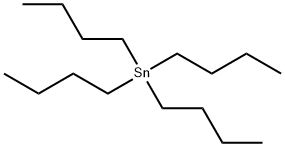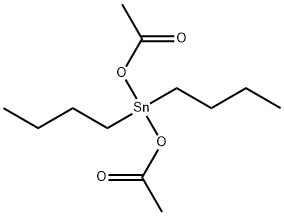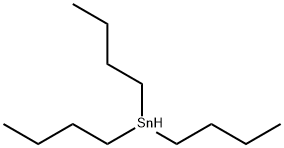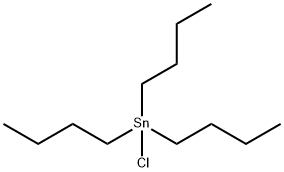A8580432
Tetrabutyltin , 95% , 1461-25-2
Synonym(s):
Tetrabutylstannane, Tin tetrabutyl;Tetra-n-butyltin;Tin tetrabutyl
CAS NO.:1461-25-2
Empirical Formula: C16H36Sn
Molecular Weight: 347.17
MDL number: MFCD00009422
EINECS: 215-960-8
Update time: 2022-07-08
PRODUCT Properties
| Melting point: | -97 °C (lit.) |
| Boiling point: | 127-145 °C/10 mmHg (lit.) |
| Density | 1.057 g/mL at 25 °C (lit.) |
| vapor pressure | 0.0014 hPa (25 °C) |
| refractive index | n |
| Flash point: | 225 °F |
| storage temp. | Store below +30°C. |
| solubility | 0.008g/l |
| form | liquid |
| Specific Gravity | 1.0572 |
| color | colorless |
| Water Solubility | insoluble |
| Hydrolytic Sensitivity | 1: no significant reaction with aqueous systems |
| BRN | 3648237 |
| Exposure limits | ACGIH: TWA 0.1 mg/m3; STEL 0.2 mg/m3 (Skin) NIOSH: IDLH 25 mg/m3; TWA 0.1 mg/m3 |
| Dielectric constant | 9.7400000000000002 |
| Stability: | Stable. Incompatible with strong oxidizing agents. Combustible. |
| LogP | 5.07 at 22℃ |
| CAS DataBase Reference | 1461-25-2(CAS DataBase Reference) |
| NIST Chemistry Reference | Stannane, tetrabutyl-(1461-25-2) |
| EPA Substance Registry System | Tetrabutyltin (1461-25-2) |
Description and Uses
Tetra-n-butyltin is used in hydrogenolysis reactions and as a transition metal catalyst. It is also used stabilizers in the manufacture of polyvinyl chloride.
Safety
| Symbol(GHS) |    GHS06,GHS08,GHS09 |
| Signal word | Danger |
| Hazard statements | H301-H312-H315-H319-H372-H410 |
| Precautionary statements | P273-P280-P301+P310-P302+P352+P312-P305+P351+P338-P314 |
| Hazard Codes | T,N |
| Risk Statements | 21-25-36/38-48/23/25-50/53-48/23 |
| Safety Statements | 35-36/37/39-45-60-61 |
| RIDADR | UN 1760 8/PG 2 |
| WGK Germany | 3 |
| RTECS | WH8605000 |
| TSCA | Yes |
| HazardClass | 6.1(b) |
| PackingGroup | III |
| HS Code | 29310095 |
| Hazardous Substances Data | 1461-25-2(Hazardous Substances Data) |
| Toxicity | LD50 orally in Rabbit: 1268 mg/kg |






